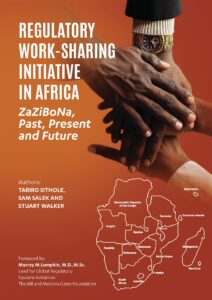PREFACE: The role of regulatory authorities in the health system is to ensure the quality, safety and efficacy of medical products. It is acknowledged that regulatory authorities are at times faced with challenges in executing this mandate. Challenges, such as limited resources and technical capacity, which may lead to delayed access to medical products by patients. To address these challenges, regulators are ‘joining hands’ and collaborating in areas such as the assessment of medical product applications and inspection of manufacturing plants. In addition, regulators are implementing reliance on the work or decisions of other regulators.
One such collaboration is the Southern African Development Community’s collaborative medicines registration initiative, ZaZiBoNa. This initiative has been in existence since 2013, however, the last evaluation of the initiative was conducted in 2016. At the time, the initiative had a membership of only the four founding members and a few products had gone through the process. The ZaZiBoNa has since grown and all 16 SADC countries are members (9 active, 5 non-active and 2 observers). More products have been assessed and the number of applicants that have used the procedure has increased presenting an opportune time for the formal evaluation of the performance and regulatory review system.
This was achieved through a series of studies which culminated in the development of a number of recommendations. Robust individual member country processes contribute to a more effective and efficient ZaZiBoNa; therefore, the gaps in the regulatory review processes of the participating countries were identified and solutions proposed to strengthen these processes. Recommendations for the improvement of the current model of the ZaZiBoNa initiative were also made to address the challenges identified with the initiative particularly those around a lack of central tracking and coordination. The implementation of these recommendations will result in an immediate improvement to the effectiveness and efficiency of the initiative whilst a longer term solution is considered. Lastly, a new model, namely a centralised procedure has been proposed as well as the legal framework that would enable this and the additional considerations that need to be made by the decision makers in the member countries in order to implement this new model.
One of the authors has over 13 years of experience working with the regulatory authority in Zimbabwe and as such has an extensive knowledge of the regulatory environment in ZaZiBoNa. The other two authors have, over the past three decades, worked closely with the pharmaceutical industry, mature regulatory agencies and those in the emerging economies to provide guidance and validated tools in order to enhance regulatory performance.
The authors were encouraged to produce this research in a format that would be accessible by a wider audience as this vital piece of work has provided some recommendations which are key to the success of the ZaZiBoNa initiative in its next phase. It is hoped that this work will aid in bringing transparency to the ZaZiBoNa process encouraging the pharmaceutical industry to use the procedure. In addition, we hope that these studies together with the methodologies and tools used as well as the recommendations made, may be of value to other regional harmonisation initiatives serving as a blue print for enhancing the regulatory review process and patients’ access to new medicines.
Sithole T, Salek S, Walker S. Regulatory work-sharing initiative in Africa: ZaZiBoNa, past, present and Future. 2022.

